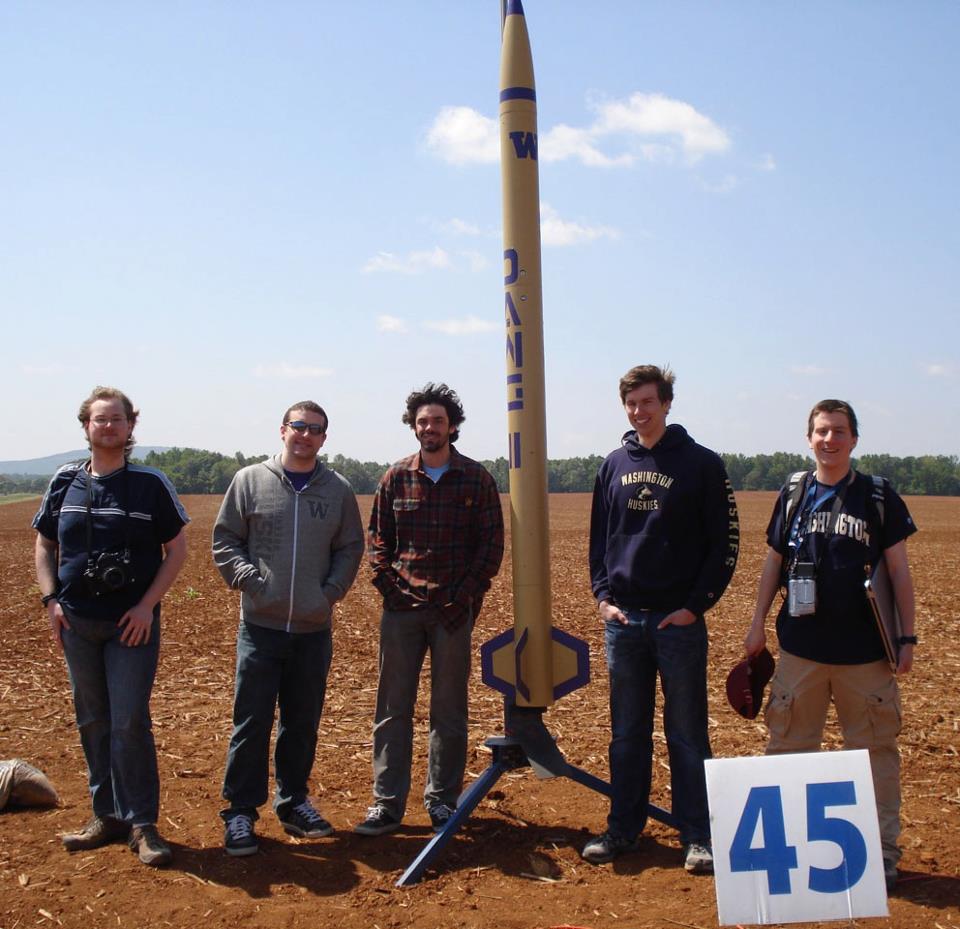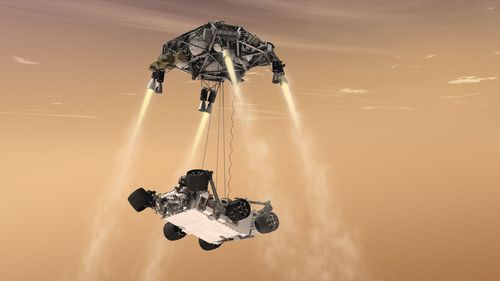Astrobiology provides a compelling scientific rationale for space exploration. In turn, astrobiological data from other planets can often be obtained only by robotic explorers like the Mars rovers or from large space-based telescopes that make observations of distant planets in our Solar System and beyond. UWAB researchers work on specific engineering questions that enable space exploration, such as propulsion and power systems, and explore technologies for enabling manned missions to Mars. Similarly, many UWAB researchers work as team members or collaborators on ongoing spacecraft missions and space-borne telescopes that study the Earth, Mars, and other planetary bodies.
Technologies For Space Exploration
 UWAB researchers work in the areas of space propulsion, space power systems, energy conversion and laser applications. Many of these new technologies have both Earth-based and space-based applications. Work has also been done on developing technologies and architectures for manned and unmanned Mars missions based on in situ resource utilization – including exploring the potential to extract water from the Martian atmosphere and crust for life support and the production of rocket fuel.
UWAB researchers work in the areas of space propulsion, space power systems, energy conversion and laser applications. Many of these new technologies have both Earth-based and space-based applications. Work has also been done on developing technologies and architectures for manned and unmanned Mars missions based on in situ resource utilization – including exploring the potential to extract water from the Martian atmosphere and crust for life support and the production of rocket fuel.
Spaceflight Mission Involvement
 UW research into the detectability of signs of habitability and life on an Earth-like planet has benefited strongly from UWAB faculty and student participation on the NASA EPOXI mission. The EPOXI mission reused the Deep Impact spacecraft to take photometric and spectral observations of Earth from a distance, allowing Earth to be studied as if it were an extrasolar planet. Research led by UWAB students using EPOXI data has resulted in new techniques to detect extrasolar planetary oceans and the presence of moons orbiting extrasolar planets. It has also provided constraints on the determination of surface temperature and pressure on extrasolar terrestrial planets. UWAB’s past and present scientific collaborations provide strong links to high-profile spaceflight missions such as the Mars Exploration Rovers, the Mars Phoenix Lander which studied the Martian near-pole environment; Mars Odyssey and the Mars Reconnaissance Orbiter which study temperature and mineralogy on Mars remotely from orbit; the Mars Science Laboratory, a new rover for the Martian surface that will search for signs of past life on Mars; the Orbiting Carbon Observatory-2, which will map the sources and sinks of CO2 on the Earth; and the Kepler mission, a spaceborne telescope that is searching for Earth-like planets around other stars.
UW research into the detectability of signs of habitability and life on an Earth-like planet has benefited strongly from UWAB faculty and student participation on the NASA EPOXI mission. The EPOXI mission reused the Deep Impact spacecraft to take photometric and spectral observations of Earth from a distance, allowing Earth to be studied as if it were an extrasolar planet. Research led by UWAB students using EPOXI data has resulted in new techniques to detect extrasolar planetary oceans and the presence of moons orbiting extrasolar planets. It has also provided constraints on the determination of surface temperature and pressure on extrasolar terrestrial planets. UWAB’s past and present scientific collaborations provide strong links to high-profile spaceflight missions such as the Mars Exploration Rovers, the Mars Phoenix Lander which studied the Martian near-pole environment; Mars Odyssey and the Mars Reconnaissance Orbiter which study temperature and mineralogy on Mars remotely from orbit; the Mars Science Laboratory, a new rover for the Martian surface that will search for signs of past life on Mars; the Orbiting Carbon Observatory-2, which will map the sources and sinks of CO2 on the Earth; and the Kepler mission, a spaceborne telescope that is searching for Earth-like planets around other stars.
